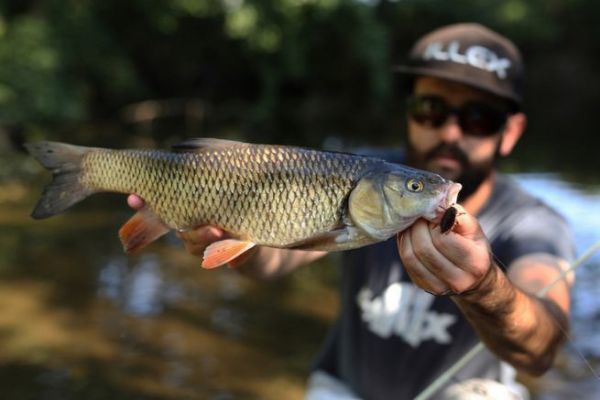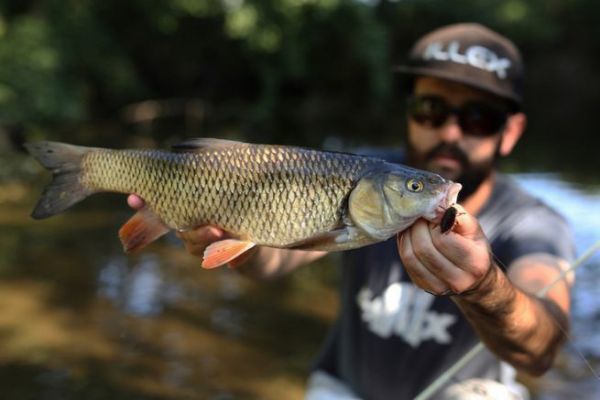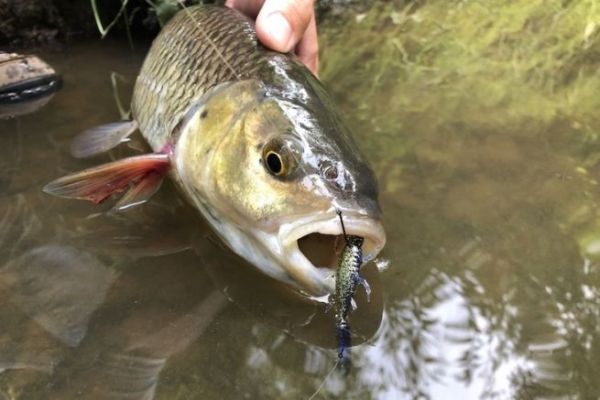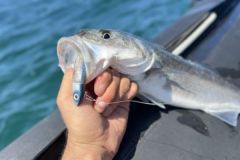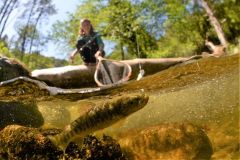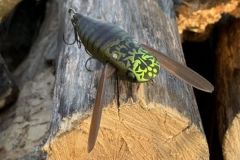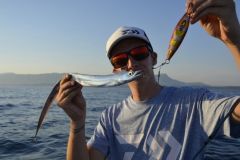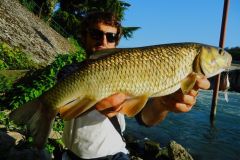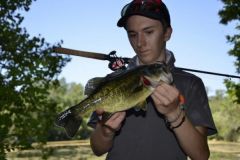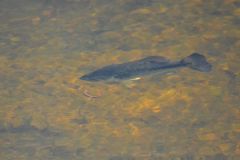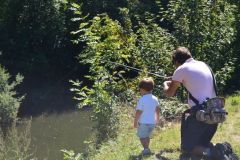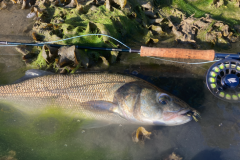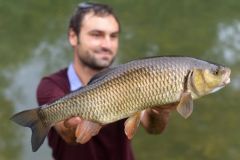For several years now, the world of lure fishing has had a renewed interest in this fish, and rightly so. There are many ways to catch them, but using insect imitations during the summer is certainly the most fun and one of the most technical of all!
The chub: its habits and situation in France
The chub (Squalius cephalus) is a cyprinid with a rather gregarious and opportunistic feeding behavior. It is an omnivorous fish, consuming small invertebrates, insects, fruit and even small white fish. This logically leads to a wide range of fishing techniques. What's more, this species is very well represented in France's 2nd category waters. Two characteristics that make its pursuit particularly interesting.
In summer, the chub swims up into the water. The chub is there, almost motionless near the surface, or slowly marauding in the open water, or lurking at the edge in the shade of the foliage, often on the lookout for anything that might fit its diet. It is indeed in summer that they are most inclined to feed on the surface.
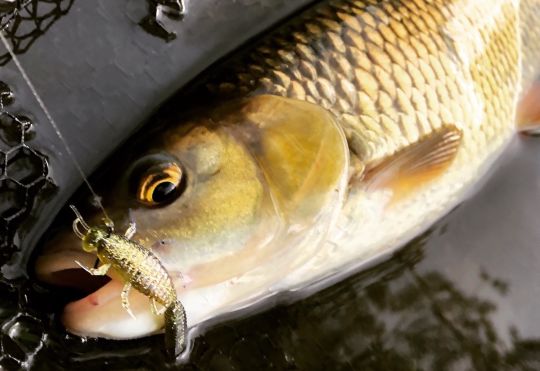
Careful approach
The chub is a very wary fish with highly developed vision. This must be taken into account when searching for them. After many years spent stalking them on long summer evenings, I have observed some characteristic behaviour of this fish at the sight of an angler. They may classically flee after seeing you or, surprisingly, stay put. In the latter case, it will be very difficult, if not totally impossible, for you to make up your mind. The approach is therefore decisive.
What's more, in summer, fish are very mobile and can be found in many different places, including very close to the bank you're standing on. Be as discreet as possible, try to camouflage yourself as much as possible (by wearing dark-colored clothes, for example. Don't wear white!) and watch out for the sun and cast shadows! So it's vital to think carefully about how you approach a position, so as to optimize the presentation of your lure.
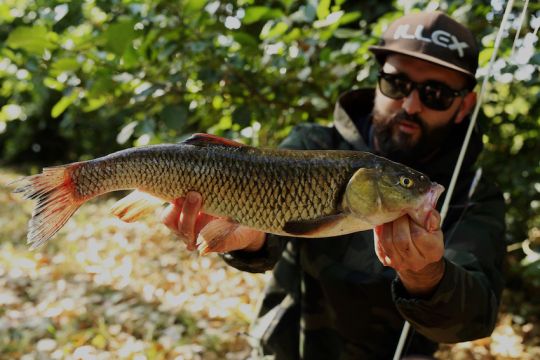
Lure presentation
This is one of the most technical types of fishing I do, as a chub won't usually give you several attempts to fool it. Sometimes you can get a fish to crack after several successive casts at the same spot with the same lure, but this is exceptional. You have to work on the principle that the first cast has to be the right one! You need to save your casts, optimize your every move and only cast when you see a fish. It's often when you attempt a "blind" cast that you see a marauding fish swim by. How frustrating... So a word of advice: when you're in an area you know is favorable, it's sometimes a good idea to stand still on the edge and wait a few moments in the hope of seeing a fish pass by.
After a careful approach, a fish is now in sight. You now need to offer your lure in the best possible way. Ideally, cast in front of the fish and avoid, as far as possible, casting at it or touching it with the streamer. The slightest oddity will often arouse the distrust of the fish, and even more so that of the larger ones which are also the most experienced. A poorly presented lure, a haphazard cast, a drift speed too fast due to the wind rushing through the streamer, and you're guaranteed failure.
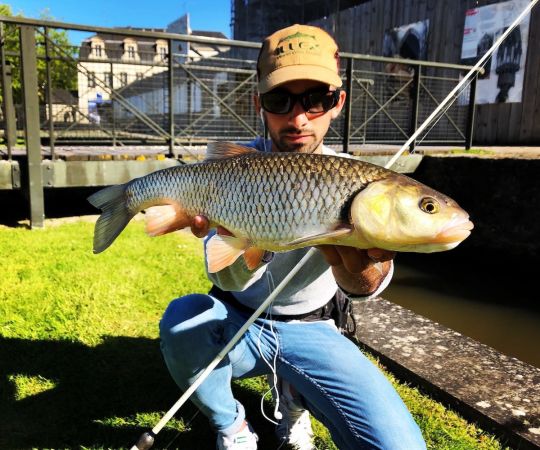
Horseshoeing, or how to control your nerves
As with all sight fishing, an all-too-common mistake is to try to strike too early. This is a perfectly normal reflex when you're new to this type of fishing, but it leads to a lot of misses. It's essential to keep your cool when you see the fish gobble the lure, to let it turn around until you feel its weight on the line before you strike. It's a great way to work on controlling your nerves!
The evening river stroke
Although it's possible to foil the chub's legendary distrust at any time of day in summer, I have a very clear preference for the evening shot, when insects descend close to the river surface, triggering fish activity. The "competition for food" mode kicks in, the fish lower their level of vigilance and are therefore less difficult to lure. Under these conditions, it's not uncommon to see several big fish in a row on the same spot. What's more, when light levels drop, fish can sometimes only be distinguished by the noises generated by their gobbling at the surface. In such cases, you'll have to use your ears rather than your eyes to cast as close as possible to the gobbles!
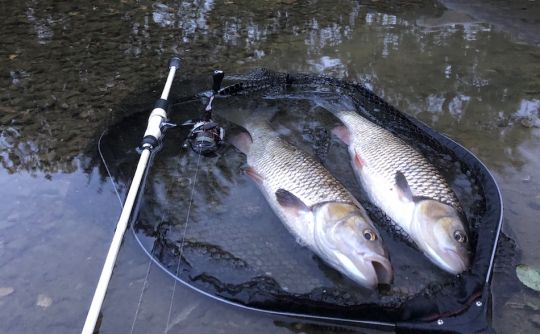
Fun, technical and educational seasonal fishing
I think it's one of the fish I've learned the most from since I started fishing. Having long suffered from its status as a second-rate trout, the quest for chub is nonetheless fascinating and very rich from a learning point of view. For the more reluctant, when carnivorous fish are less active during the day, chub fishing represents a very interesting alternative. What's more, chub fishing regularly holds surprises in store, and it's not uncommon to arouse the interest of other fish such as rotengle, perch or black-bass, to name but a few.

 /
/ 